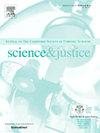An evaluation of the ACE-V latent fingerprint examination process in the Indonesian National Police
IF 2
4区 医学
Q2 MEDICINE, LEGAL
引用次数: 0
Abstract
This study investigated the implementation of ACE-V (Analysis, Comparison, Evaluation, and Verification) as the standard protocol for fingerprint examination in the Identification Centre of the Indonesian National Police. An online questionnaire-based survey was developed, and 71 Indonesian fingerprint examiners participated. The results showed significant variation in the sequential steps used during the examination process, suggesting the value of exploring more standardized procedures and improving transparency. The findings revealed considerable disparities in compliance with the ACE-V, with each participant adhering to a different sequence of processes during the examination. Several significant deviations from the ACE-V standard protocol were also identified. These included apparent oversights in the examination of discrepancies between the fingermark and reference print, the failure to assess the adequacy of the reference print, and the omission of analysis of distortion in the fingermark.
An absence of consensus was noted among examiners in this study when assessing suitability of fingermarks of moderate quality, which is consistent with the findings of other published studies. The data also indicate that the fingerprint examiner participants adjusted their confidence levels regarding the presence of minutiae in a fingermark after scrutinizing the reference print. These findings indicate the importance of improving detailed documentation of minutiae annotation during the analysis and comparison phase. It is suggested that to ensure that examiners are equipped with a comprehensive understanding of friction ridge skin characteristics and incorporating approaches to ensure the transparency and consistency of the examination process, current training and agency certification processes should be considered.
评价ACE-V潜指纹检测过程在印尼国家警察
本研究调查了ACE-V(分析、比较、评估和验证)作为印度尼西亚国家警察鉴定中心指纹检测的标准方案的实施情况。开展了一项基于在线问卷的调查,有71名印度尼西亚指纹鉴定员参与了调查。结果显示,在审查过程中使用的顺序步骤存在显著差异,这表明探索更标准化的程序和提高透明度的价值。研究结果显示,在ACE-V的依从性方面存在相当大的差异,每个参与者在检查期间都遵循不同的过程顺序。还确定了与ACE-V标准协议的几个重大偏差。其中包括在检查手印和参考指纹之间的差异时明显疏忽,未能评估参考指纹的充分性,以及遗漏对手印失真的分析。在本研究中,在评估中等质量手印的适用性时,审查员之间缺乏共识,这与其他已发表的研究结果一致。数据还表明,指纹鉴定员参与者在仔细检查了参考指纹后,调整了他们对指纹中存在的细节的信心水平。这些发现表明了在分析和比较阶段改进细枝末节注释详细文档的重要性。建议,为了确保审查员对摩擦脊皮特性有全面的了解,并纳入确保考试过程透明度和一致性的方法,应考虑当前的培训和机构认证流程。
本文章由计算机程序翻译,如有差异,请以英文原文为准。
求助全文
约1分钟内获得全文
求助全文
来源期刊

Science & Justice
医学-病理学
CiteScore
4.20
自引率
15.80%
发文量
98
审稿时长
81 days
期刊介绍:
Science & Justice provides a forum to promote communication and publication of original articles, reviews and correspondence on subjects that spark debates within the Forensic Science Community and the criminal justice sector. The journal provides a medium whereby all aspects of applying science to legal proceedings can be debated and progressed. Science & Justice is published six times a year, and will be of interest primarily to practising forensic scientists and their colleagues in related fields. It is chiefly concerned with the publication of formal scientific papers, in keeping with its international learned status, but will not accept any article describing experimentation on animals which does not meet strict ethical standards.
Promote communication and informed debate within the Forensic Science Community and the criminal justice sector.
To promote the publication of learned and original research findings from all areas of the forensic sciences and by so doing to advance the profession.
To promote the publication of case based material by way of case reviews.
To promote the publication of conference proceedings which are of interest to the forensic science community.
To provide a medium whereby all aspects of applying science to legal proceedings can be debated and progressed.
To appeal to all those with an interest in the forensic sciences.
 求助内容:
求助内容: 应助结果提醒方式:
应助结果提醒方式:


